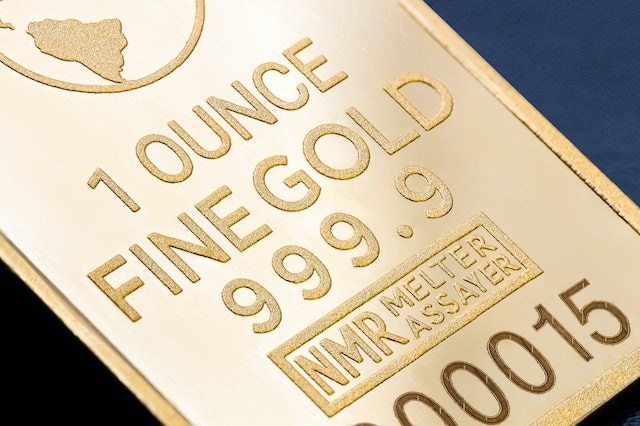What is 24k Gold? Where to Buy and How to Determine Purity?
Gold has been treasured by humans for thousands of years, and for good reason. Its beauty, rarity, and durability have made it a highly coveted material for jewelry, currency, and decoration. Among the many types of gold available, 24k gold is often considered the purest and most valuable. In this blog post, we will explore what 24k gold is, where to buy it, and how to determine its purity.
What is 24k Gold?

Gold is measured in karats, with 24k being the highest purity. It means that 24 out of 24 parts of the metal are gold, which makes it 99.9% pure. Pure gold is too soft to use in its natural state for jewelry or other decorative items, so it is often mixed with other metals to increase its durability and strength. The percentage of gold in an alloy is expressed in karats, with 24k being the purest and 10k is the lowest gold content that can legally be marketed as "gold" in the United States.

24k gold is often used in bullion coins and bars, as well as for investment purposes. It is also used for some high-end jewelry and decorative items. While 24k gold is highly valued for its purity, it is not always the best choice for jewelry or other items that will be subjected to wear and tear. Because it is so soft, it is more prone to scratches and damage than lower-karat alloys.
American Gold Eagle Coin

The American Gold Eagle coin is a popular gold coin produced by the United States Mint. The coin was first introduced in 1986 and is made from 22-karat gold. The coin features a design of Lady Liberty on the obverse side and a family of eagles on the reverse side. The American Gold Eagle coin is available in four sizes: 1/10 oz, 1/4 oz, 1/2 oz, and 1 oz.
 The American Gold Eagle coin is a popular choice among investors and collectors due to its high gold content, beautiful design, and high liquidity. The coin is widely recognized and accepted around the world and can be easily bought and sold at any reputable coin dealer.
The American Gold Eagle coin is a popular choice among investors and collectors due to its high gold content, beautiful design, and high liquidity. The coin is widely recognized and accepted around the world and can be easily bought and sold at any reputable coin dealer.
Canadian Gold Maple Leaf Coin
The Canadian Gold Maple Leaf coin is a popular gold coin produced by the Royal Canadian Mint. The coin was first introduced in 1979 and is made from 24-karat gold, making it one of the purest gold coins available. The coin features a design of Queen Elizabeth II on the obverse side and a maple leaf on the reverse side.
The Canadian Gold Maple Leaf coin is a popular choice among investors and collectors due to its high gold content, purity, and beautiful design. The coin is widely recognized and accepted around the world and can be easily bought and sold at any reputable coin dealer.
Credit Suisse Gold Bar
The Credit Suisse gold bar is a popular gold bar produced by Credit Suisse, a Swiss multinational investment bank and financial services company. The gold bar is made from 99.99% pure gold and is available in a range of sizes, from 1 gram to 1 kilogram.
The Credit Suisse gold bar is a popular choice among investors due to its high purity, recognized brand, and ease of storage. The gold bar is widely recognized and accepted around the world and can be easily bought and sold at any reputable gold dealer.
Valcambi Gold Bar
The Valcambi gold bar is a popular gold bar produced by Valcambi Suisse, a Swiss precious metals refinery. The gold bar is made from 99.99% pure gold and is available in a range of sizes, from 1 gram to 1 kilogram.
The Valcambi gold bar is a popular choice among investors due to its high purity, recognized brand, and unique design. The gold bar features a unique motif of the Valcambi logo, which is composed of four interconnected circles.
Where to Buy 24k Gold?
If you are interested in purchasing 24k gold, there are several options available to you. The most common places to buy 24k gold include jewelry stores, online retailers, and precious metals dealers.
Jewelry Stores
Many jewelry stores carry 24k gold jewelry, including necklaces, bracelets, and earrings. However, because 24k gold is so soft, it is often alloyed with other metals to increase its durability. This means that even if a piece of jewelry is advertised as 24k gold, it may not be 100% pure gold. Additionally, jewelry stores often charge a premium for the craftsmanship and design of their pieces, so you may end up paying more than the current market value of the gold.
Online Retailers
Many online retailers specialize in selling precious metals, including 24k gold. These retailers often offer a wider selection of products than brick-and-mortar stores, and they may offer lower prices due to reduced overhead costs. However, it is important to do your research before buying from an online retailer. Look for reviews from other customers and check the retailer's reputation with organizations like the Better Business Bureau.
Precious Metals Dealers
Another option for buying 24k gold is to work with a precious metals dealer. These dealers specialize in buying and selling gold, silver, platinum, and other precious metals. They often offer a wider selection of products than jewelry stores and may offer more competitive prices than online vendors. Additionally, precious metals dealers may offer services like storage and transportation, making it easier to invest in gold for the long term.
How to Determine the Purity of 24k Gold?
If you are considering purchasing 24k gold, it is important to know how to determine its purity. There are several ways to do this, including using a gold testing kit, conducting a nitric acid test, and having the gold professionally appraised.
Gold Testing Kit
One way to test the purity of 24k gold is to use a gold testing kit. These kits typically come with a testing stone and a set of solutions that can be used to determine the gold content of a sample. To use the kit, rub the gold on the testing stone to create a streak. Then, add a drop of each solution in the kit to the streak and observe the reaction. Depending on the kit, the color of the streak may change, indicating the presence of other metals in the gold alloy.
Nitric Acid Test
Another method for determining the purity of 24k gold is to conduct a nitric acid test. This test involves applying a small amount of nitric acid to the gold, which will react with any other metals present in the alloy. If the gold is 24k or close to it, there should be no reaction. However, if the gold is alloyed with other metals, the acid will react and cause the gold to turn a greenish color.
Professional Appraisal
If you want to be certain of the purity of your 24k gold, you can have it professionally appraised. A professional appraiser will use a combination of visual inspection, acid testing, and other methods to determine the gold content of your item. While this may be more expensive than using a testing kit or conducting a nitric acid test, it is the most accurate way to determine the purity of your gold.
Additionally, it is important to note that the value of gold coins and bars can fluctuate based on several factors, including the current market price of gold, supply, and demand, and the condition of the coins or bars. It is important to keep these factors in mind when making a purchase or selling your gold.
When purchasing gold coins or bars, it is important to work with a reputable dealer. Look for a dealer that has a long-standing reputation in the industry and is a member of professional organizations such as the Professional Numismatists Guild (PNG) or the American Numismatic Association (ANA). A reputable dealer will also provide you with a certificate of authenticity or other documentation to verify the purity and authenticity of your gold coins or bars.
It is also important to store your gold coins or bars in a secure location, such as a safe or a safety deposit box. Keep in mind that gold is a highly valuable and sought-after material, so it is important to take precautions to protect your investment.
Conclusion
24k gold is a highly valued and sought-after material that has been treasured by humans for thousands of years. While it is not always the best choice for jewelry or other items that will be subjected to wear and tear, it is often used for investment purposes and high-end decorative items.
If you are interested in purchasing 24k gold, there are several options available to you, including jewelry stores, online retailers, and precious metals dealers. However, it is important to know how to determine the purity of your gold before making a purchase.
By using a gold testing kit, conducting a nitric acid test, or having the gold professionally appraised, you can ensure that you are getting what you pay for and making a wise investment decision.





 Saving for retirement is a crucial part of financial planning, and employer-sponsored retirement plans like 401(a) and 401(k) can be great options for building a nest egg. However, it’s essential to understand the key differences between these plans to make an informed decision about which one is right for you.
Saving for retirement is a crucial part of financial planning, and employer-sponsored retirement plans like 401(a) and 401(k) can be great options for building a nest egg. However, it’s essential to understand the key differences between these plans to make an informed decision about which one is right for you.
 Investing in gold mining stocks provides investors with exposure to the price of gold, as well as the potential for additional upside if the company is successful in discovering and producing more gold. However, investing in gold mining stocks also comes with risks, such as operational challenges, regulatory risks, and fluctuations in gold prices.
Investing in gold mining stocks provides investors with exposure to the price of gold, as well as the potential for additional upside if the company is successful in discovering and producing more gold. However, investing in gold mining stocks also comes with risks, such as operational challenges, regulatory risks, and fluctuations in gold prices.